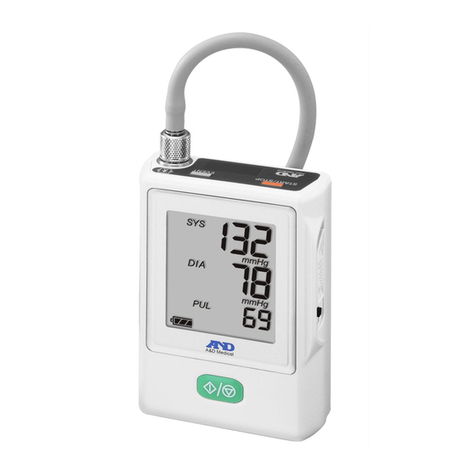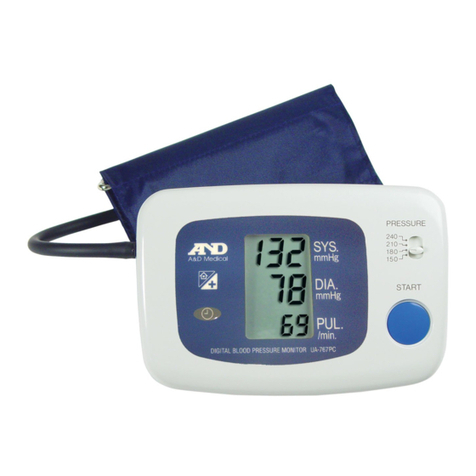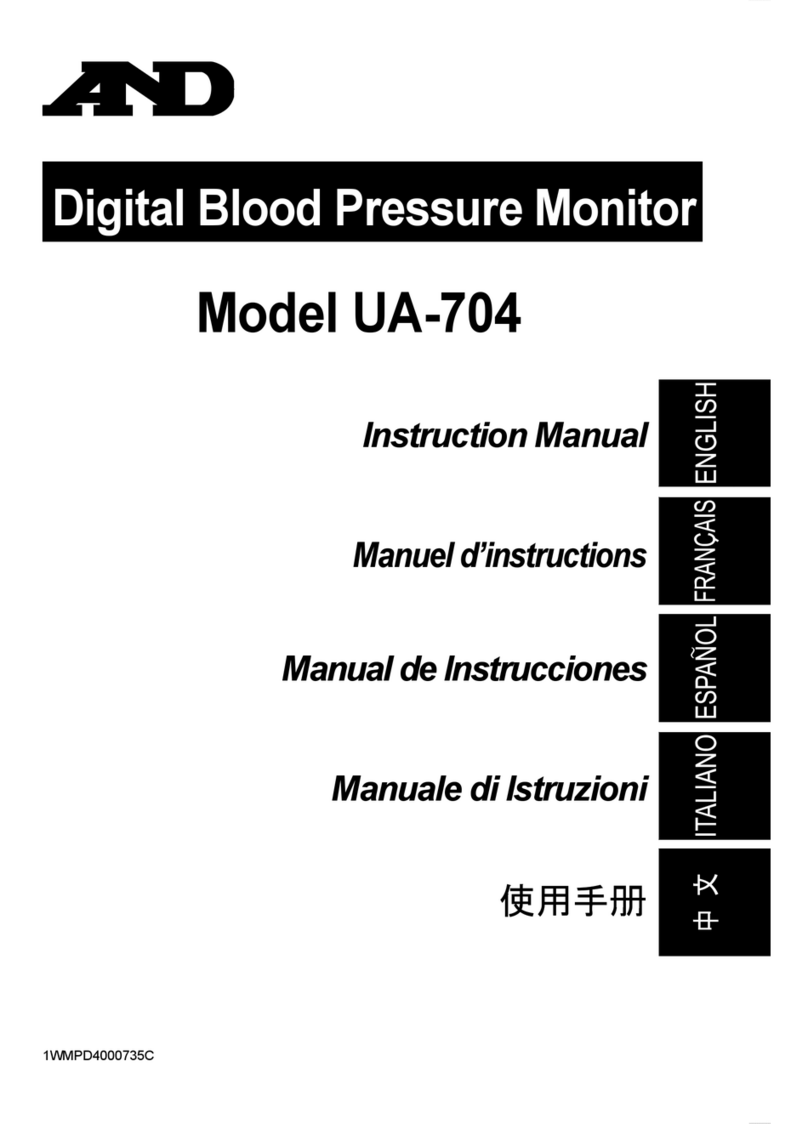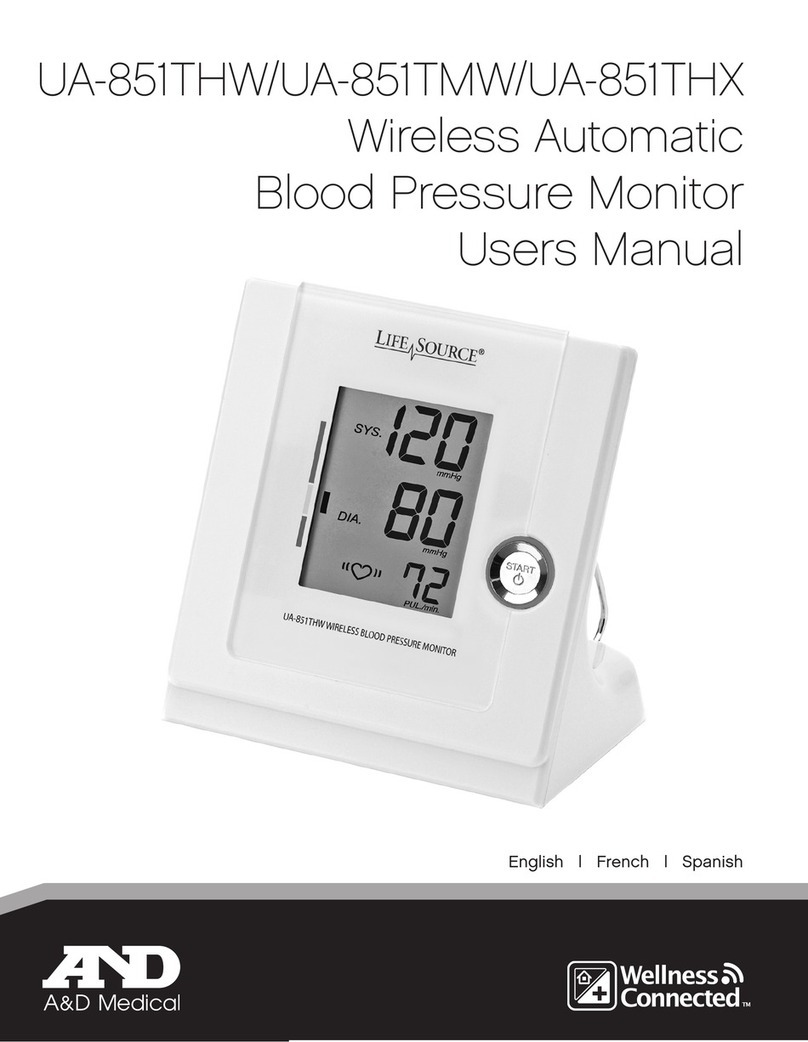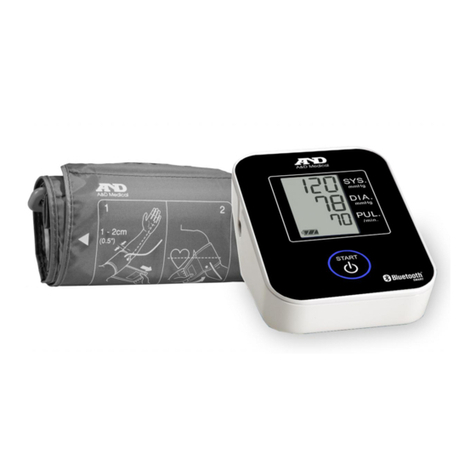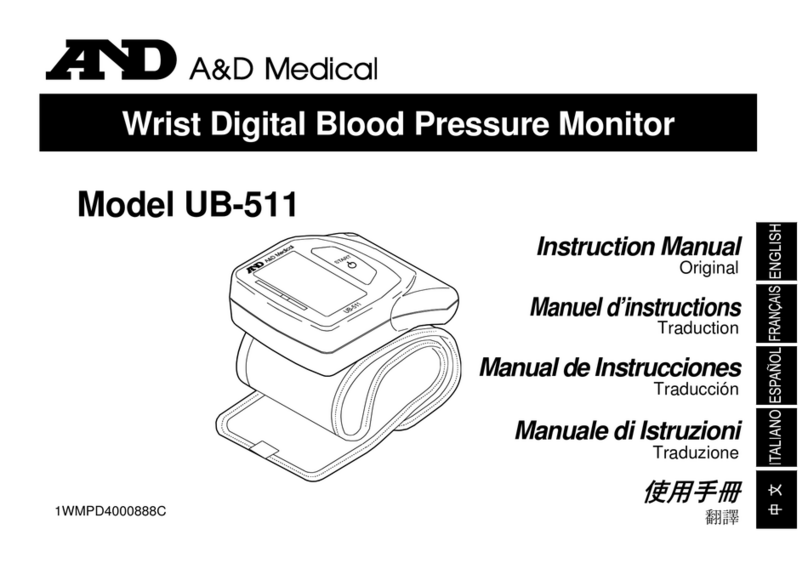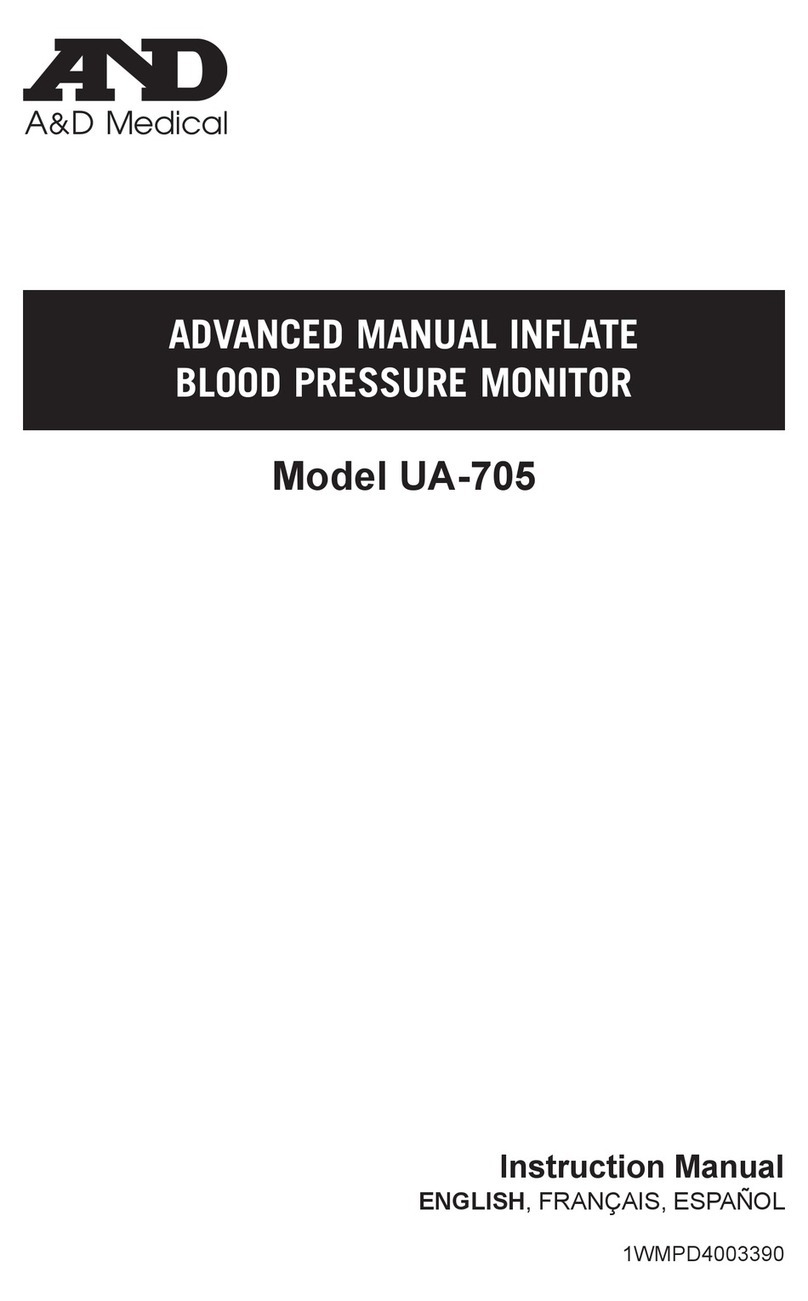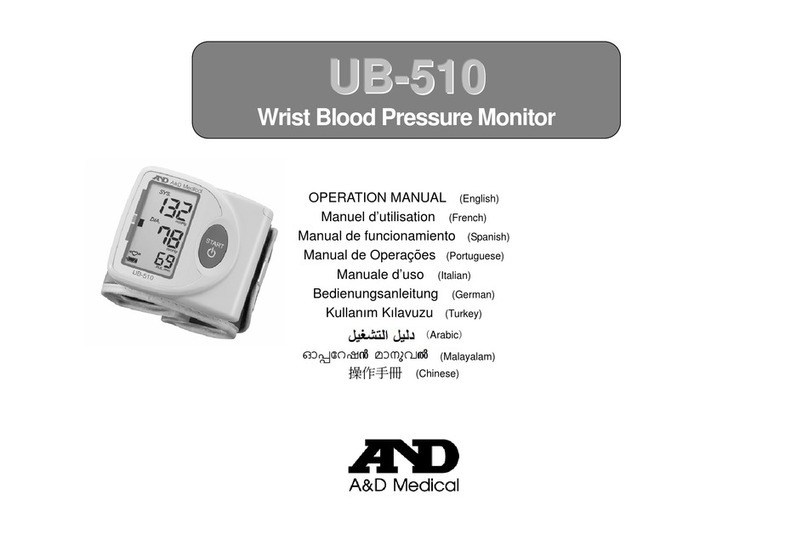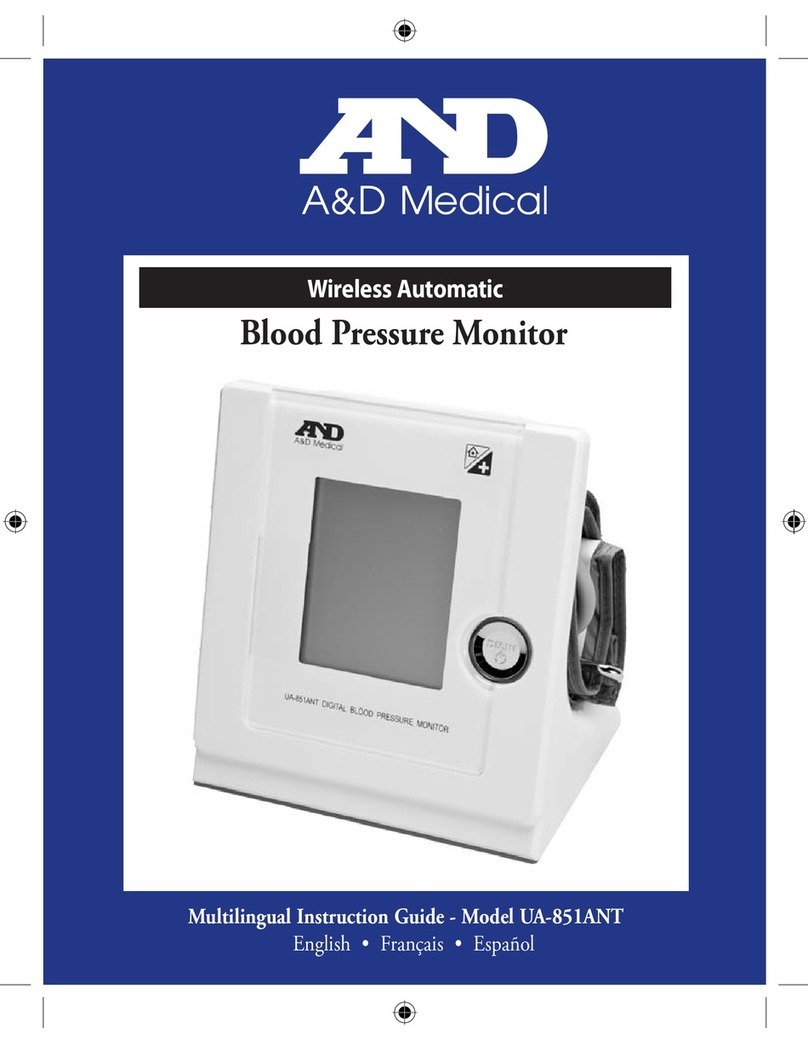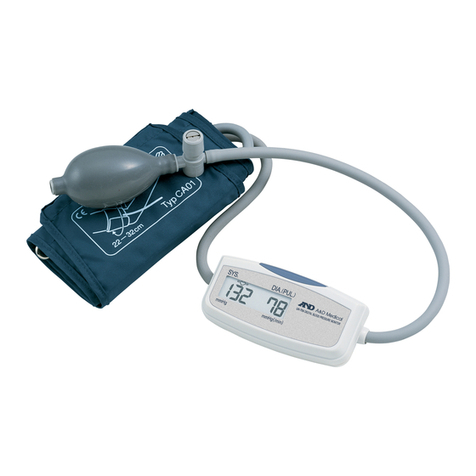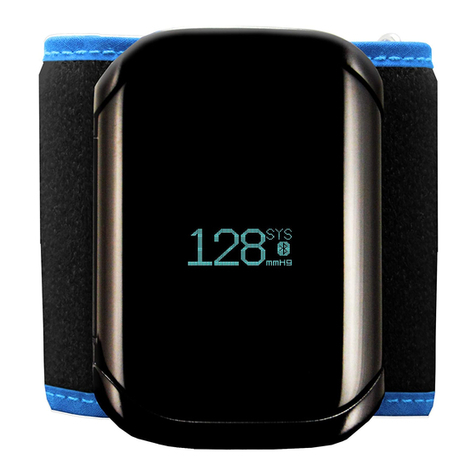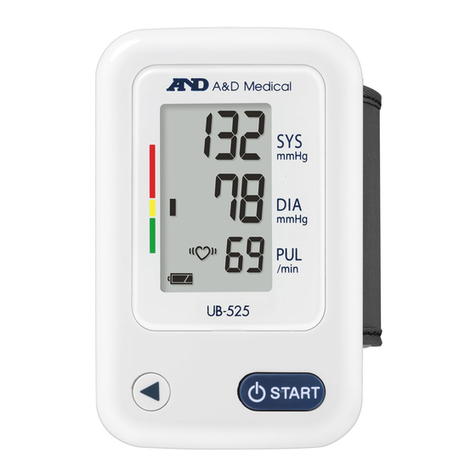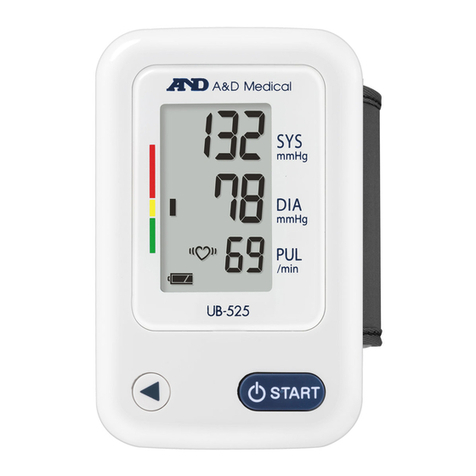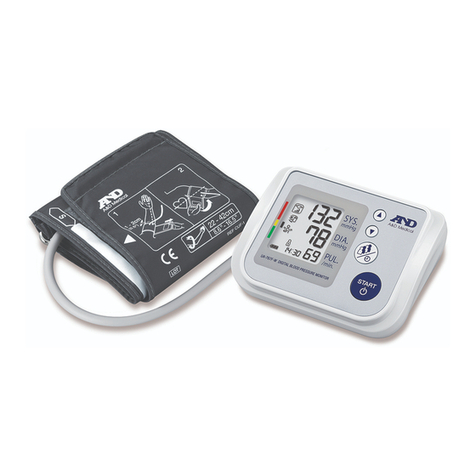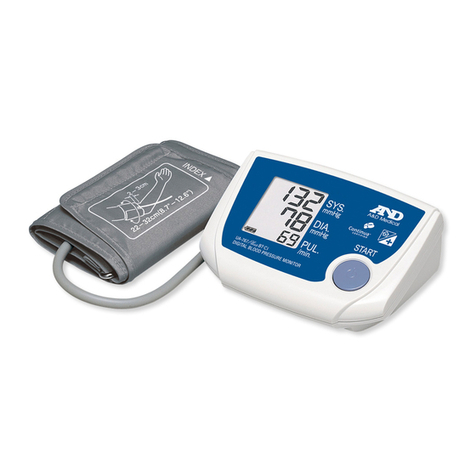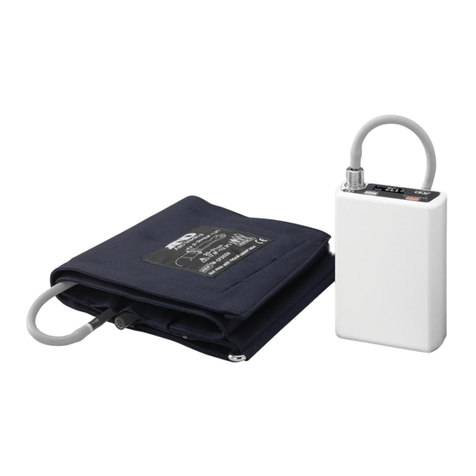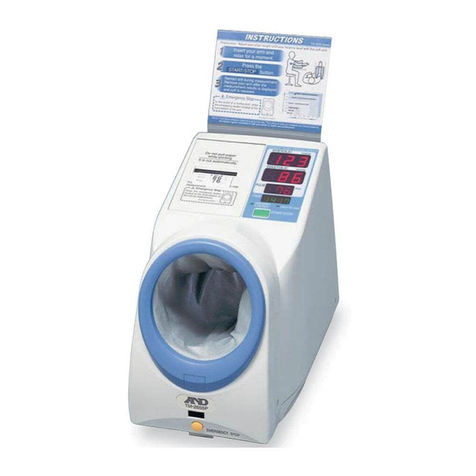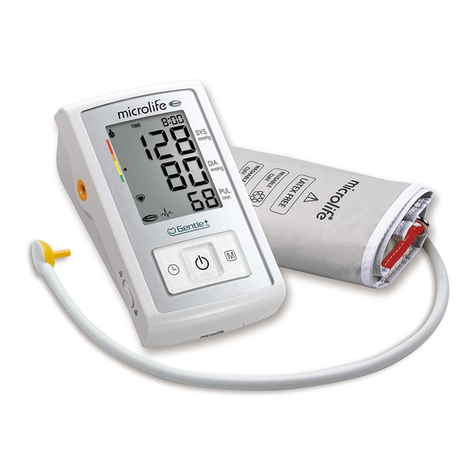Greetings
Congratulations on purchasing a state-of-the-art A&D blood
pressure monitor, one of the most advanced monitors available
today. Designed for ease of use and accuracy, this device will
facilitate your daily blood pressure regimen. We recommend that
you read through this manual carefully before using the device for
the first time.
Preliminary Remarks
U The device is designed for use on adults only, not newborns or
infants.
U Environment for use: The device is for use to operate by
yourself in the home healthcare environment.
LI This device is designed to measure blood pressure and pulse
rate of people for diagnosis.
Precautions
U Precision components are used in the construction of this
device. Extremes in temperature, humidity, direct sunlight,
shock or dust should be avoided.
U Clean the device and cuff with a dry, soft cloth or a cloth
dampened with water and a neutral detergent. Never use
alcohol, benzene, thinner or other harsh chemicals to clean the
device or cuff.
U Avoid tightly folding the cuff or storing the hose tightly twisted
for long periods, as such treatment may shorten the life of the
components.
U The device and cuff are not water resistant. Prevent rain, sweat
and water from soiling the device and cuff.
U Measurements may be distorted if the device is used close to
televisions, microwave ovens, cellular telephones, phones.
X-ray or other devices with strong electrical fields.
U When using the device, confirm that the device is clean.
Precautions
•
Li Used equipment, parts and batteries are not treated as
ordinary household waste, and must be disposed of according
to the applicable local regulations.
U When the AC adapter is used, make sure that the AC adapter
can be readily removed from the electrical outlet when
necessary.
U Do not modify the device, It may cause accidents or damage to
the device.
U To measure blood pressure, the arm must be squeezed by
the cuff hard enough to temporarily stop blood flow through
the artery. This may cause pain, numbness or a temporary red
mark to the arm. This condition will appear especially when
measurement is repeated successively. Any pain, numbness,
or red marks will disappear with time.
U Do not apply the cuff on an arm in which another medical
device is attached. The equipment may not function properly.
U People who have a severe circulatory deficit in the arm must
consult a doctor before using the device, to avoid medical
problems.
U Do not self-diagnose the measurement results and start
treatment by yourself. Always consult your doctor for
evaluation of the results and treatment.
U Do not apply the cuff on an arm with an unhealed wound.
LI Do not apply the cuff on an arm receiving an intravenous drip
or blood transfusion. It may cause injury.
LI Do not use the device where flammable gases such as
anesthetic gases are present. It may cause an explosion.
U Do not use the device in highly concentrated oxygen
environments, such as a high-pressure oxygen chamber or an
oxygen tent. It may cause a fire or explosion.
U Take care to avoid accidental strangulation with babies or
infants by the hose.
U Do not twist the cuff hose. This may cause injury due to
continuous cuff pressure.
